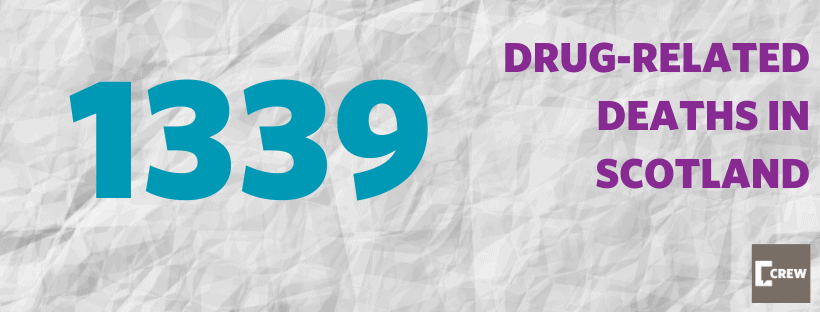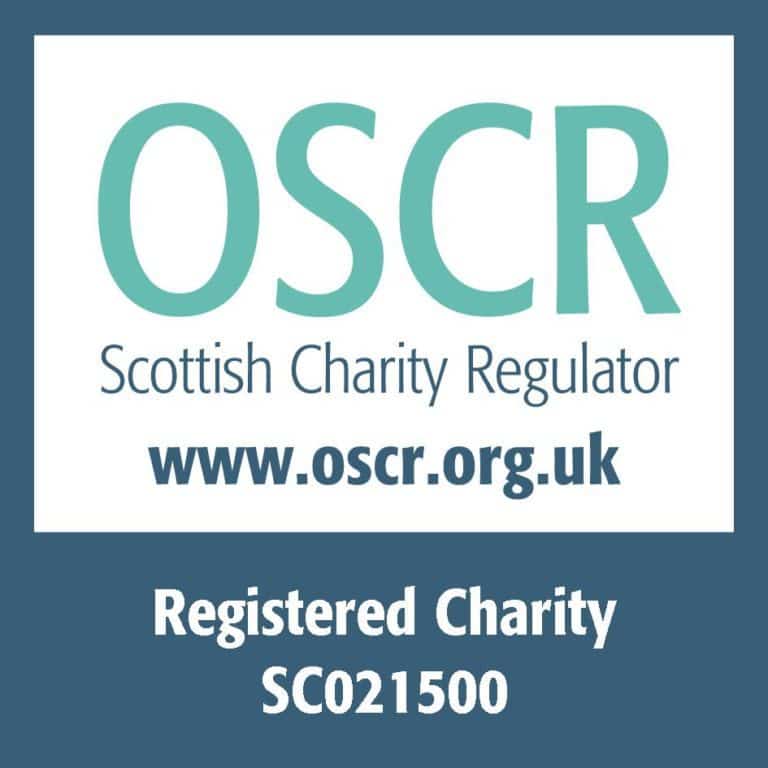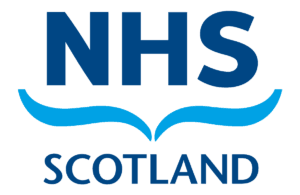The report detailing drug-related deaths for the year 2020 was released this week on 30 July 2021. The yearly publication from the National Records of Scotland revealed that drug-related deaths in Scotland had risen by 5% on the previous year.
1,339 people died after taking drugs in Scotland, which is a 176% increase from 10-years-ago in 2010 when there were 485 drug-related deaths.
Download our full Drugs at Crew Interim Report on Drug Related Deaths in Scotland 2020
What is a drug-related death?
A drug-related death is generally a poisoning caused by the toxic effects of a controlled drug. Not every death related to the use of drugs is counted as a ‘drug-related death’ and the definition is not straightforward.
“The ‘baseline’ definition for the UK Drugs Strategy covers the following cause of death categories (the relevant codes from the International Statistical Classification of Diseases and Related Health Problems, Tenth Revision [ICD10], are given in brackets):
a) deaths where the underlying cause of death has been coded to the following sub-categories of ‘mental and behavioural disorders due to psychoactive substance use’:
(i) opioids (F11);
(ii) cannabinoids (F12);
(iii) sedatives or hypnotics (F13);
(iv) cocaine (F14);
(v) other stimulants, including caffeine (F15);
(vi) hallucinogens (F16); and
(vii) multiple drug use and use of other psychoactive substances (F19).
b) deaths coded to the following categories and where a drug listed under the Misuse of Drugs Act (1971) was known to be present in the body at the time of death (even if the pathologist did not consider the drug to have had any direct contribution to the death):
(i) accidental poisoning (X40 – X44);
(ii) intentional self-poisoning by drugs, medicaments and biological
substances (X60 – X64);
(iii) assault by drugs, medicaments and biological substances (X85); and
(iv) event of undetermined intent, poisoning (Y10 – Y14).” [4]
Deaths which are not counted by the ‘baseline’ definition include deaths from:
- Alcohol, tobacco and volatile substances e.g. butane (lighter gas)
- Any drug not covered by the Misuse of Drugs Act (1971) e.g. New Psychoactive Substances that are covered by the Psychoactive Substances Act (2016)
- Bacterial infections, for example, Clostridium botulinum (botulism), Bacillus anthracis (anthrax), Staphylococcus aureus, even if the infection was contracted as a result of drug use
- Viruses, for example, HIV, hepatitis B and hepatitis C, even if the virus was contracted as a result of drug use
- Accidents or injuries which occur under the influence of drugs such as road traffic accidents, drowning, falls and exposure
- Assault by someone who is under the influence of a drug controlled by the Misuse of Drugs Act (1971)
- Legally prescribed, non-controlled drugs
- Acute behavioural disturbances
- Suicide while under the influence (unless it was via an overdose of a controlled drug)
- Medical conditions related to drug use such as chronic obstructive pulmonary disorder, pneumonia and endocarditis
Highest drug-related death rate in Europe
The number of drug-related deaths in Scotland has been rising year on year since 2014 and have reached the highest level since records began. Scotland has the highest drug-related death rate in Europe and is approximately 3.5 times that of the rest of the UK (England, Wales and Northern Ireland). 2020 data for England and Wales is due to be published by the Office of National Statistics on 03 August 2021.
This graph uses data from the European Monitoring Centre for Drugs and Drug Addiction (EMCDDA) to illustrate the rate of ‘drug-induced’ deaths aged 15-64: per million people in Europe, with Scotland’s death rate of 327 (people per million) shamefully towering over the EU average of 14. In this graph the statistics for Great Britain rather than the whole of the UK are illustrated.

This article from the Ferret in 2019 explains how drug-related deaths in Scotland are recorded. This fact-checking service dismisses claims that deaths are over-reported in Scotland. While there may be differences in how drug-related deaths are reported or recorded in other countries we have had the same recording system in place in Scotland since 2008. This means that in this country, drug-related deaths have been recorded in the same way for more than a decade.
We can see from the graph below produced by the National Records of Scotland that there has been a sharp rise in drug-related deaths, most notably between 2014 and 2020 where the rate has doubled (an increase of 118% from 613 to 1,339).
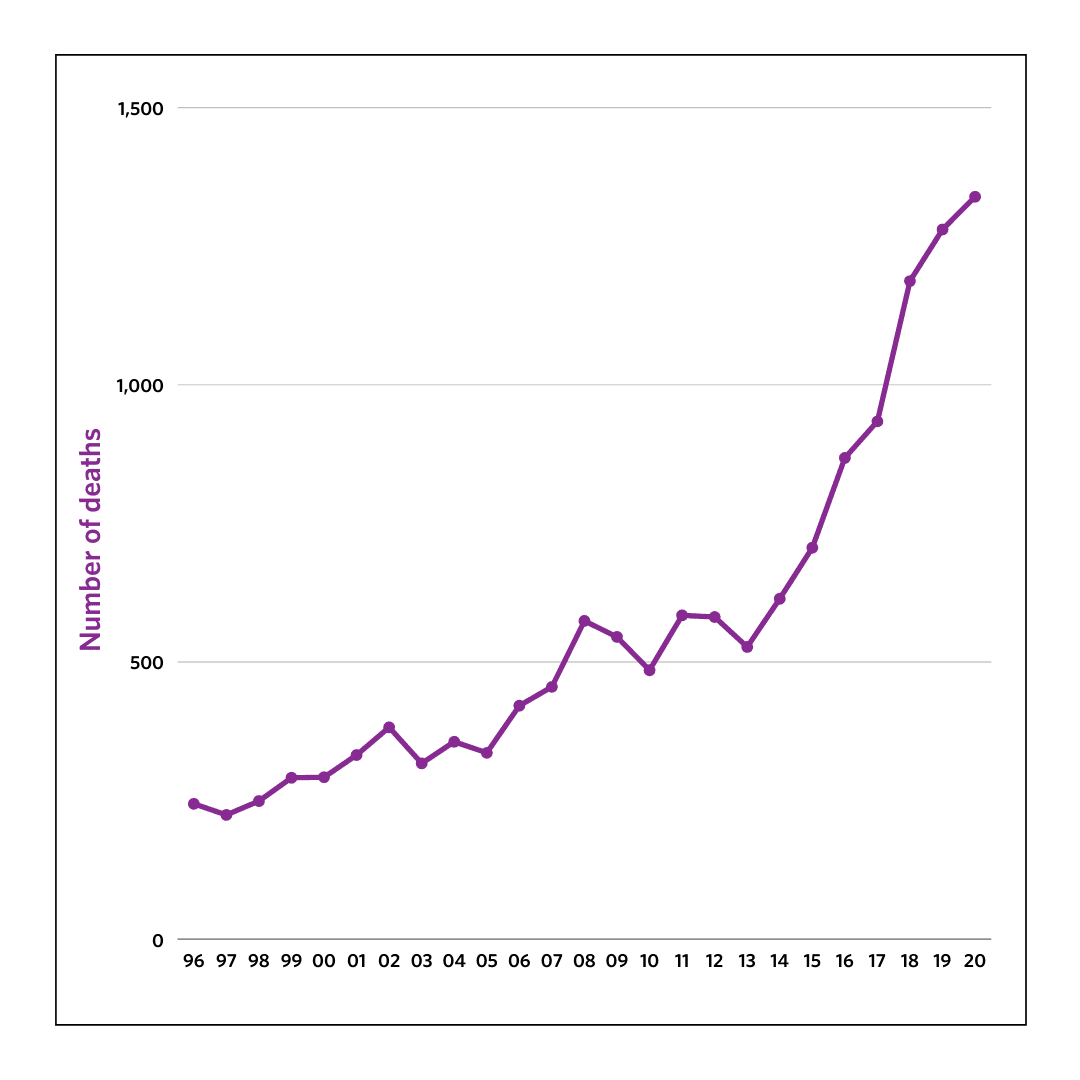
The data
2020’s report shows the highest drug related-deaths in Scotland since records began in 1996 when 244 deaths were recorded. Polydrug use (the use of more than one drug at a time) is a major risk factor in drug deaths. The (mode) average number of drugs implicated in a death is 3, and ranges between 1 and 11.

We can see that the use of opioid and benzo-type drugs are the driving factor behind the high drug-related death rate but there has also been a significant recent increase in the number of deaths where cocaine and/or gabapentinoids were implicated.
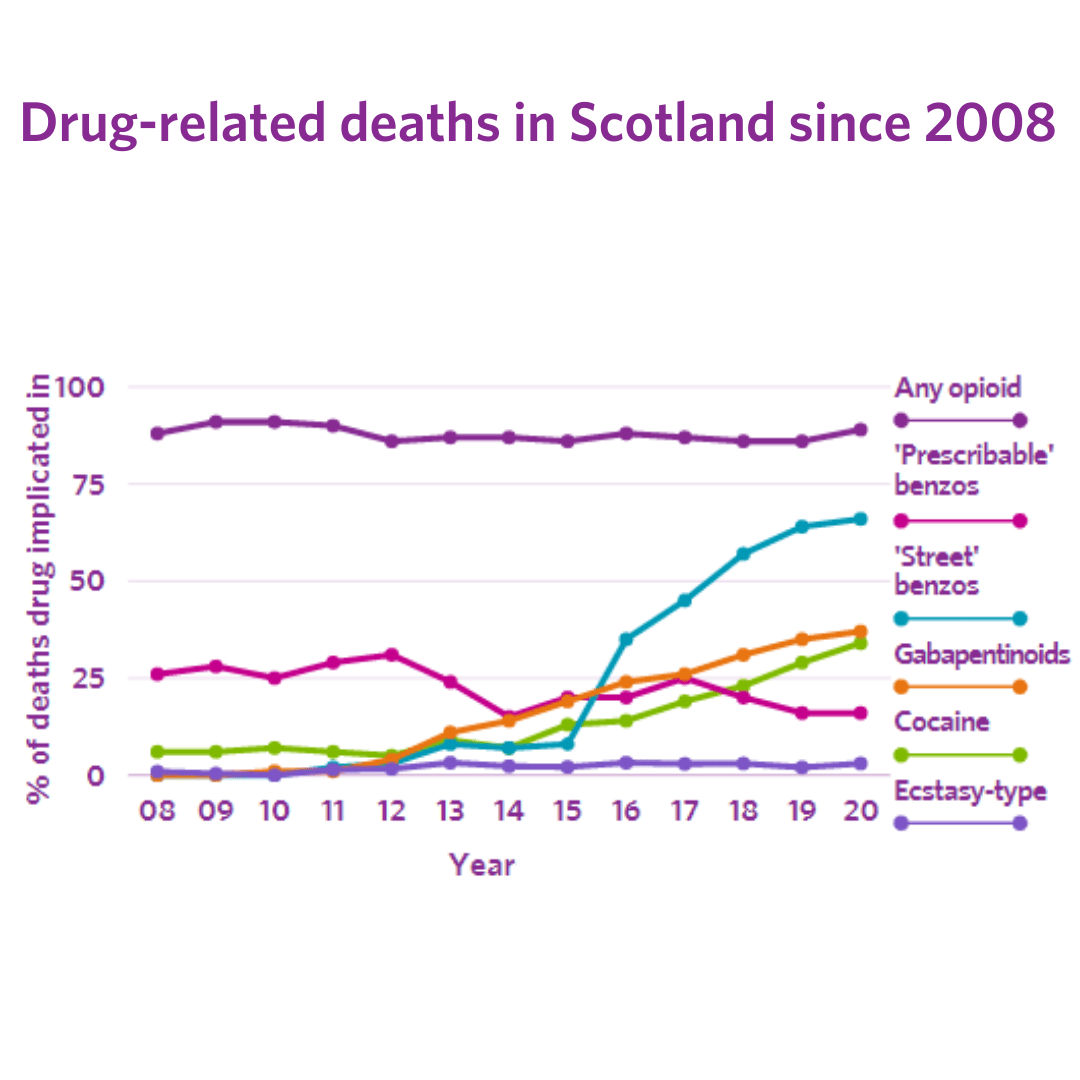

Opioids are implicated in 89% of all deaths. This is why it is essential that anyone who takes opioid drugs such as heroin, methadone, codeine or tramadol (or anyone who knows someone who does), should carry naloxone. Naloxone is a life-saving medication that can reverse the effects of an opioid overdose. Watch the video below from the Scottish Drugs Forum to find out more about how naloxone works.
Find out more about administering naloxone and what to do in an emergency.
Naloxone is free and anyone over the age of 16 can grab a naloxone kit from the Crew Drop-in, or order a postal kit from Scottish Families Affected by Alcohol and Drugs.




Download a PDF of the above graphics here: Drug Related Deaths 2020 – Social Media Graphics

